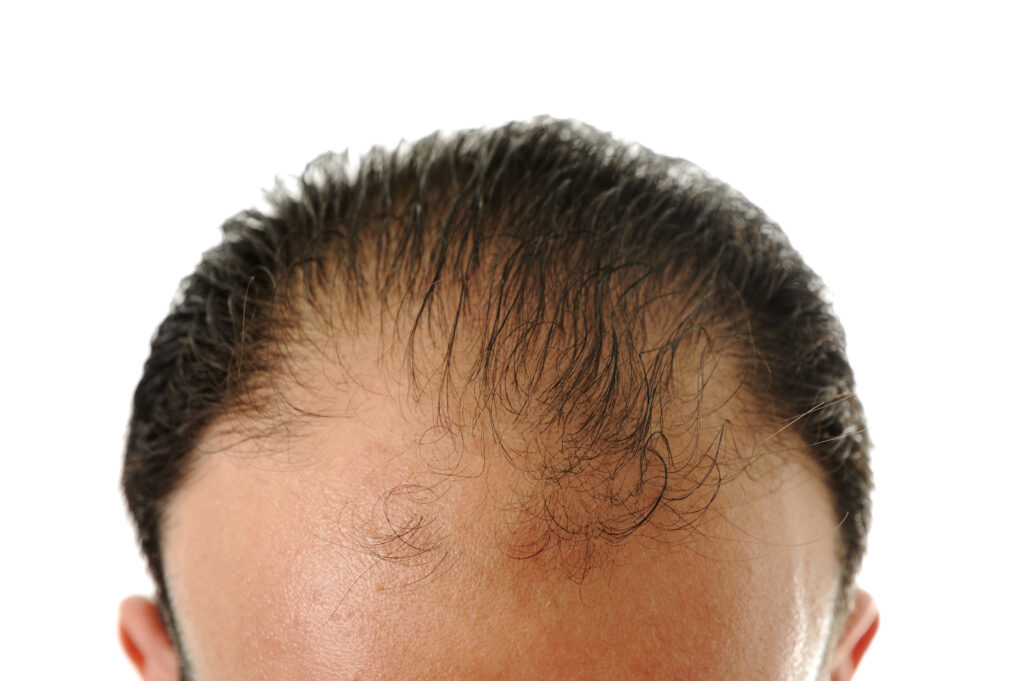Hair Restoration
Androgenetic alopecia, or pattern baldness, is the leading cause of hair loss in men and women. Less common causes of hair loss include certain medications, thyroid disease, childbirth and cancer treatments. Male pattern baldness usually begins with a receding hairline and thinning at the crown. Female pattern baldness usually consists of thinning across the top of the scalp with preservation of the frontal hairline.
Hair transplant surgery offers men and women a permanent and natural-looking solution to pattern baldness. In the early days of hair transplants, the results did not always appear natural and left many transplant patients feeling dissatisfied with the outcome. This changed in the 1990s when surgeons began to understand the importance of the follicular unit to hair transplant surgery. Today, modern hair transplant surgery involves the extraction and transplantation of distinct follicular units. While the transplantation technique is the same, there are two main methods used to extract the follicular units, known as strip harvesting and Follicular Unit Extraction (FUE).
When doctors talk about “follicular units” they are referring to the entire hair follicle structure. This includes the visible hair above the surface as well as the glands, blood vessels, nerves and tissue hidden beneath the skin. The entire follicular unit must be preserved during extraction in order for hair to re-grow best in its new location. Strip harvesting and FUE both allow for the preservation of the follicular units during extraction.
STRIP HARVESTING
To obtain the follicular units, the surgeon first removes a horizontal strip of hair from the back or sides of the patient’s scalp. The incision is meticulously sutured to minimize scarring. Then the surgeon and his or her team carefully dissect the follicular units and prepare them for transplantation.
Strip harvesting results in a horizontal scar at the donor site. Most skilled surgeons are able to suture the skin in a way that the scar is barely visible, concealed by longer hair. The scar is more likely to be seen in patients who like to wear their hair shaven or closely cropped, so it is recommended and understood that one must wear their hair at least ½ inch long to conceal the scar.
The recovery period following strip harvesting is relatively short. Patients are able to resume normal activities within 24 hours, but should refrain from strenuous activities and exercise for seven days. Some scabbing at the recipient site is expected, so many patients prefer to remain home from work for three or four days until the scabbing has disappeared. Some patients report tenderness in the extraction areas as the skin heals and the sutures disappear. While the pain is not severe, many patients find the recovery after strip harvesting to be slightly less comfortable than FUE.
FOLLICULAR UNIT EXTRACTION
When using the FUE method, the surgeon creates tiny holes around follicular units on the sides or back of the patient’s head and then carefully lifts the follicular units out of the scalp. These follicular units are then transplanted in the recipient area.
In comparison to strip harvesting, FUE is far less likely to produce noticeable scarring at the donor site. The tiny holes that are created to extract the follicular units are rarely visible once the area has healed. Healing time and discomfort is typically less than that associated with strip harvesting.
The donor area needs to be shaved short for harvesting, which may be difficult for some patients. This can be mitigated with proper hair styling before and after the procedure. In addition, it takes longer to harvest the donor hair using FUE because the surgeon must harvest individual follicles.
Recovery following FUE is relatively quick and comfortable. More strenuous activities and exercise should be avoided to reduce the risk of bleeding and prevent injury to the donor and recipient sites. Some scabbing will occur at both the donor and recipient sites, so many people choose to remain home from work for a few days. Swelling may occur on the forehead and around the eyes in some cases. In general, the recovery period associated with FUE is shorter and more comfortable than the recovery after strip harvesting.
Regardless of the extraction method used, when performed correctly the results of all modern hair transplant surgery are permanent and natural looking. After the procedure, the transplanted hairs will fall out, but they will re-grow within three to four months. The full effects of the hair transplant are typically seen within 12 to 18 months.

